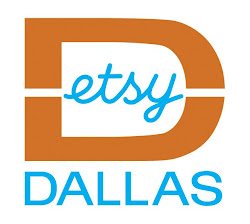I'd like to talk about wholesale vs. consignment. I think it can be hard to articulate and figure out what's best for you as a designer on these issues, especially when you are standing across the counter from a store owner. There is an economic theory behind the two options, and how it's handled can be the difference between having a profit margin that works and one that doesn't.
Companies who sell wholesale make money by selling in bulk.They are usually much bigger than anyone who is reading this, that is why they can afford to buy their materials in bulk as well, have it made in China, and still make a profit selling it wholesale. Bulk.
Typically the retailer will buy merchandise from you and double the price they paid for it. Sometimes even triple it. In this scenario, you don't care what they sell it for- they own it. The reason why you set minimums for wholesale orders is that, even though your cost is cut by half( frustrating for people who sell on etsy) you have a big check that you can use to invest in more supplies, marketing, etc. If you allow a store to buy two or three items wholesale, you are just giving away your product at half the price.
I am not saying we should all have fantastically high minimums, but if you set it by piece( say 10 pieces or by total( say 250-500.) then every time the store gets low on your stuff, they have to buy a certain amount, which benefits you.
While they may try to convince you otherwise( knowing you are new at this, or a small company, or local) trust me--retailers are used to minimums. When they go to Market to buy for their store, they often have to meet a 1,000 dollars, or 6 pieces per group( there are often 6 groups to a season, depending on the company) Store owners are business people like everyone else, and unfortunately business seems to be about everyone getting the most for the least.
That's why I like consignment. In the eight years I've been making a living at this I've made more money off consignment accounts than wholesale. For one thing, it's easier to convince the buyer to try it, even when it's slow, like now in the middle of the summer or a recession.
Consignment also gives you the flexibility to pull your stock if you need it for a show or a festival. Be considerate about this, but remember that it's your right to pull it--you still own it. Give them notice, don't do it weekly, but do it if you need to.
Here is the deal about consignment. I want everyone to keep these thoughts in their mind the next time you are negotiating with a buyer over percentages.
You are spending money and time making your product. While it sits in their store, you can't sell it anywhere else( like full retail on etsy). It is getting tried on, handled and shopworn while you wait for it to sell. And you are getting less than retail without the boost of a big check, while it sells one at a time.Always ask what their policy has been if something gets stolen ( guess what? They should pay. Your property is on their watch, if they aren't paying attention that should not mean that you should suffer.)Write inventory lists and keep a copy. People forget, they lose things, etc.
The most important part of this equation is that, unlike what they buy at market, the store is assuming no risk while having the opportunity to make money off your stuff.
Here is what annoys me. About half of the stores I approach for consignment tell me that their policy is 50/50, meaning your cut of a 100 dollar item is 50, theirs is also 50.
Wrong, wrong, wrong.
Unless the store is on Melrose Avenue and your product is about to be sold to Catherine Zeta Jones, who will wear it in People magazine and make you an instant star, do not agree to this policy. The only fair way to run consignment is a 60/40 split. Period.
10% isn't a lot, but it can add up over the years. To me, it's something I enforce on principle, a nod to the disadvantages of forgoing a big wholesale check, a nod to the fact that the retailer gets to sell my product without any risk, without ever having to put it on clearance and lose money.
Also, the only leverage you have to entice them to become a wholesale account is that 10 percent. If they are moving 2 grand of your product each month, then they know it will sell if they buy it, and suddenly that 10% seems like something they should try to retain.
If you remain firm, most of them will agree to it, because they know it is standard.If they don;t, use the points I made above and educate them on the economics of your world as a designer. They may change their policy, they may not. If it's the best store in town, you may decide to eat the 10%. But do it consciously, and for a reason.
I once did consignment with the most fabulous upscale boutique in Houston. Their
consignment policy went like this-My price-100 dollars, they sold it for 250-275. I didn't know any better at that time. The price was too high, so it sat on the shelf, and when it did sell they made more money on my product than I did, while I was taking all of the financial risk.
There are so many stories like this. Relationships with store owners and buyers can be wonderful, that's how I met my best friend Emily. But sometimes you have to be firm and clear, put away the artist hat for a minute and act like a corporate businessy superstar in order to protect yourself and get what you deserve.




























